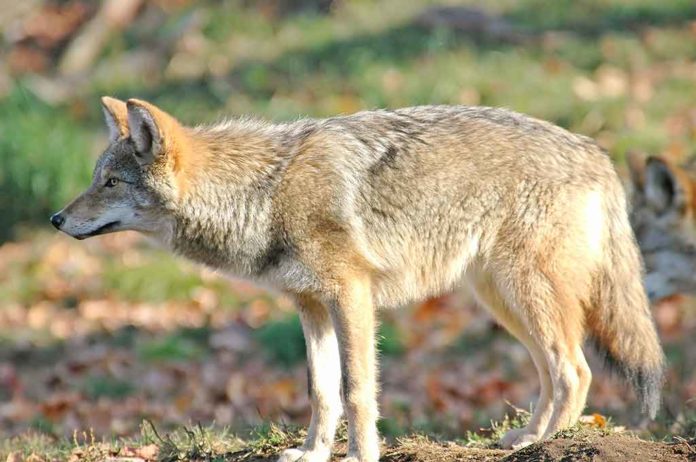By Ron Mason, Tigard Life
Some Tigard residents are surprised – when they hear about coyotes in one of our parks or along Fanno Creek – or maybe even encounter one or more in person along a trail.
Other residents are much less surprised. The Oregon Department of Fish and Wildlife advises that most of the time, coyotes are considered to be more of a nuisance than actually a threat. To keep coyotes from becoming habituated to a neighborhood area, people need to remove food sources and access to shelter.
According to Steve Martin, the City of Tigard’s Parks and Recreation Manager, he feels the population is down a little and “we’ve had no reports of anything scary recently.”
Tigard has nearly 550 acres of Parks, Greenways and Natural Areas. “The coyotes are very adaptive and move up and down the corridor,” explained Martin.
Their existence is both positive and negative. He said that about 10 years ago, there was a serious Nutria problem in Cook Park. The coyotes moved in and soon the Nutria were almost all gone. They also help control the Canadian Geese population.
“We had one coyote who laid out in the field at Cook Park and watched the crew mow,” said Martin. “If you would approach him, then he would leave.”
Coyotes are very effective in controlling rodent populations. They balance the eco system. But unfortunately, over the years, a few cats belonging to homeowners bordering Englewood Park and other wetlands have ventured out to stalk rodents – only to become fatalities of coyote attacks. Even small dogs are at risk.
Martin cautioned – “don’t leave your cat out at night and don’t leave any pet food outside.” Fallen fruit from trees also needs to be picked up. Keep your cat within a fenced yard.
City park officials feel that coyote populations in Tigard peaked in 2009, when there were two families of coyotes by Cook Park. According to Parks Supervisor Martin McKnight, if a family departs one area – another moves in. “They are good at finding food.” He added that there have been “no reports of someone encountering a den.”
“It’s a natural cycle. We’re never surprised when someone calls. Coyotes are now part of the urban environment.”
Experts agree that killing coyotes serves no purpose. If a coyote is eliminated, another quickly replaces it.
The Humane Society of the U.S. has given tips for what to do if you spot a coyote in your neighborhood: First relax. Most coyotes avoid people. If a Coyote displays no fear of people, he’s probably been fed. You can reinstill his fear by raising your arms and yelling to drive him away. This is called “hazing.”
Trapping of coyotes is seldom used because leg hold traps, devices that release lethal sodium cyanide and neck snares – also kill roaming pets. Trapping usually must be repeated many times, at great expense, and usually doesn’t catch the coyotes causing problems.
Other interesting facts about coyotes:
- A coyote in your neighborhood is probably just out foraging. Most coyotes are not aggressive toward people.
- Most adult coyotes weigh between 20 and 35 pounds, but their thick coat and long legs make them appear larger.
- Coyote breeding season is January-March. Once coyotes mate, they often stay together for life.
- Coyote pups are born in April and May, in litters ranging from four to seven pups.
- Male coyotes take an active role in raising their young.
- Mother coyotes often move their pups between several dens to protect them from predators.
- At six weeks, pups begin to explore outside their den. Come fall, they’ll decide whether to stay with their family group.
Officials with the city of Tigard Parks Division encourage residents to call with any questions regarding coyotes in a neighborhood.























